
Oberhausen. At the St. Antony-work in Oberhausen the visitors can explore the history of 250 years of Ruhr-industry. In the LVR-industrial-archaeological park, the former pulsating iron work is revived in modern 3-D animations and on charts.
The St. Antony-work in Oberhausen-Osterfeld is the birthplace of the Ruhr-industry and seed-bed for the global player Gutehoffnungshütte: in 1758 the first pig iron of the Ruhr area flowed here. Nowadays, its permanent exhibition tells about the thrilling start of the iron and steel industry, about important innovations and the hard life of the people, who worked there. Taking a closer look, the development of the St. Antony-work turns out to be a fascinating industrial thriller with flamboyant personalities up to loads of rouges and crooks. But first and foremost business acumen, entrepreneurial spirit and engineer’s art made the material of which the cradle of the Ruhr industry developed. Upon the plant lived and worked the protagonists, without whom the Ruhr area would not have become what it is nowadays: Jacobi, Haniel, Krupp, von der Wenge – they all are eminent persons of the heavy industries.
The beginnings of the St. Antony-work reach back to the year 1740. Thirteen years later, its founder Franz von der Wege received the permission of the archbishop from Cologne for build-ing an iron work to smelt the local ore deposits at the Elpenbach in Osterfeld. On October 18th, 1758, one remarkable chapter of the history of the later Ruhr area started: red glowing and boiling iron flows out of one of the first blast furnaces in the Ruhr area. “Nun iß endlich die hütte in ihre Arbeyt, der liebe Gott gebe mir seyen seegen dazu” (At last, the work is in pro-duction, may God give me his blessings) said the guard to his boss. The St. Antony-work be-came operational. With an interruption of a few years the production in St. Antony went on till 1843. Then the blast furnace was forever put out. Though, the work was in production as an iron foundry till 1877 and afterwards was completely shut down.
A huge part of the buildings was torn down shortly after the closure. One workshop-building, the forge and the clay forming were transformed into flats. The house of the work’s director with its extensions was preserved. The St. Antony-work was altered into the living place of workers, employers and directors of the company Gutehoffnungshütte Oberhausen. Today, the former house of the director contains the permanent exhibition, in which the visitors can see the findings of the excavation.
In the first industrial-archaeological park in Germany visitors can explore unique relics from the early times of iron works on the excavation site of the St. Antony-work. For four years, wall parts, foundations and parts of the production plant of the St. Antony-work have been excavated by the LVR. On the excavation area the guests will be guided through the origin of the iron and steel industry. An audio guide explains when and where buildings stood and how the former small iron work turned into an industrial plant with round about a hundred workers by adding only a few buildings. In 3-D animations and charts the once pulsating St. Antony-work is revived. A blast furnace, a cupola furnace and a foundry are reconstructed virtually and show how products like pans and pots, ammunition and machine parts were produced there.
The 1.000 square meter large steel roof, which covers the excavations, has been rewarded with the “Steel Innovation Price 2012” by the Steel Information Centre in Düsseldorf. The monocoque roof was designed by the firm of architects Ahlbrecht, Felix, Scheidt, Kasprusch in Essen.
An extensive event programme and a range of different guided tours invite our guests into the St. Antony-work. During a guided costume tour the former industrialist Gottlob Jacobi returns and tells some of the thrilling stories about the first iron and steels work. For kindergarten and schools there is an extensive educational programme. And for a spontaneous visit there are audio guides in different languages offered in the museum.
For children a trip to the St. Antony-work will as well be an experience, due to our huge ad-venture playground. In its centre the tower, with its ten meters height, is adapted from a blast furnace – with a slide, climbing walls, ladders, climbs and pipe phones.
Each year in October, the St. Antony festival brings a varied programme for young and old with many exciting activities.
Near the St. Antony-work lies the housing estate Eisenheim – the oldest of many worker’s and colliery estates in the Ruhr area. Here, the workers found a home in the golden times of the Ruhr-industry, when many of them came to the Ruhr. In 1846, Eisenheim was founded by the iron and steel works corporation Jacobi, Haniel and Huyssen. In the end of the 1950s, many of the old housing estates were planned to be torn down, to make room for modern buildings. But when the excavators came to Eisenheim in the 1970s, its inhabitants protested in a nationally noticed action against the demolition. After a long fight the remaining 38 buildings were classified as historical monuments.
Today, the Museum Eisenheim tells the history of the estate, the fight against the demolition and the everyday life of the people in the community. Furthermore, interesting walks through the estate will bring the stories and life in the housing estate closer to its guests.
Next to the St. Antony-work and the Museum Eisenheim, some other outstanding industrial monuments in Oberhausen belong to the LVR-Industriemuseum: The permanent exhibition “heavy industries” in the former zinc factory Altenberg revives the changing history of the iron and steel production in the Rhine and Ruhr area. The Peter-Behrens-Bau, a distinctive industrial building of the famous architect, was the main warehouse of the Gutehoffnungshütte (GHH) and is used as the main depository of the LVR-Industriemuseum with over 100.000 exhibits today. Nowadays, the shut down platform of the rails 4 and 5 at the main station Oberhausen is a museum and stages this place as the former place of trans-shipment for the heavy indus-tries. Impressing pieces of art and a historical train are enlightened in the evening with beautiful and colourful spotlights.
The St. Antony-work, together with the Museum Eisenheim is one of a total of seven exhibition sites of the LVR-Industriemuseum, which combined, create a unique museum. In historical factories, of which some are listed for preservation, the history of the industry in the Rhineland and its workers is told in an interesting and illustrative way. The focus is put on metal, fabrics, paper and electricity, as the local branches. Apart from the St. Antony-work the other muse-ums are waiting to be explored: the Gesenkschmiede Hendrichs, the Papiermühle Alte Dombach in Bergisch Gladbach, the Kraftwerk Ermen & Engels in Engelskirchen, the Tuchfabrik Müller in Euskirchen, the Textilfabrik Cromford in Ratingen, the Zinkfabrik Altenberg in Oberhausen. Furthermore, the museum’s headquarter with management, administration, depositories, library, photo archive and garages is placed in Oberhausen. Founder and bearer of the LVR-Industriemuseum is the Landschaftsverband Rheinland (LVR).
LVR-Industriemuseum
St. Antony-Hütte
Antoniestraße 32-34
46119 Oberhausen
LVR-Industriemuseum
Museum Eisenheim
Berliner Straße 10a
46117 Oberhausen
kulturinfo rheinland
Tel.: 02234 / 9921-555 (Mon-Fri 8 am – 6 pm; Sat, Sun 10 am – 3 pm)
Fax: 02234/9921300
Mail: info@kulturinfo-rheinland.de
Tuesday to Friday 10 am – 5 pm
Saturday and Sunday 11 am – 6 pm
Mondays closed
The museum Eisenheim is open from Easter Sunday to the 31st of October on Sundays from 11 am to 6 pm.
Regular entrance: 5,50 €, reduced 4,50 €
Children and adolescent up to 18 years get free admission to the museum!
Regular entrance: 3 €
Children and adolescent up to 18 years get free admission to the museum!
The following photographs are only to be used for editorial purposes in the context of coverage about the LVR-Industriemuseum and have to be marked with the copyright “©LVR-Industriemuseum”. Their printing is free of charge, but we would like to receive a specimen copy. The usage outside of this context is prohibited.
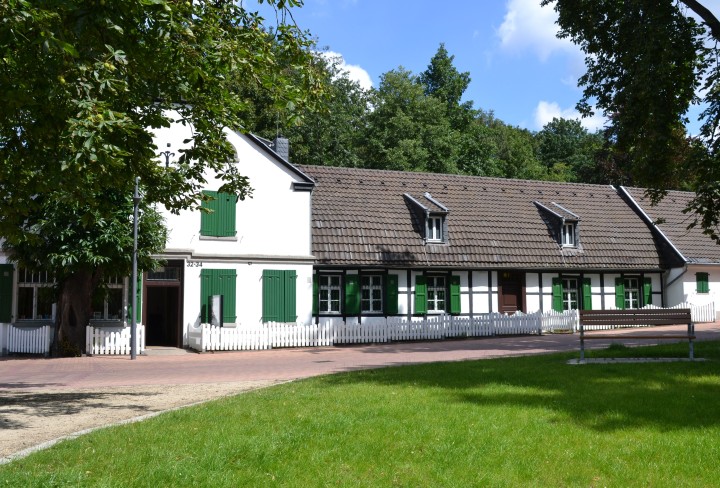
Exterior view of the former director’s house of the St. Antony-work, which today houses the permanent exhibition about the “cradle of the Ruhr-industry”.
© LVR-Industriemuseum
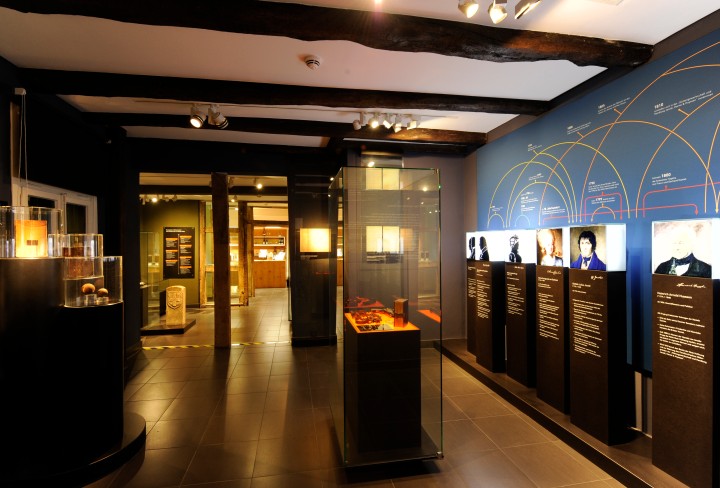
A unique exhibition concept tells about the beginnings of the iron and steel industry, signifi-cant innovations as well as the hard every day life of its people.
© LVR-Industriemuseum
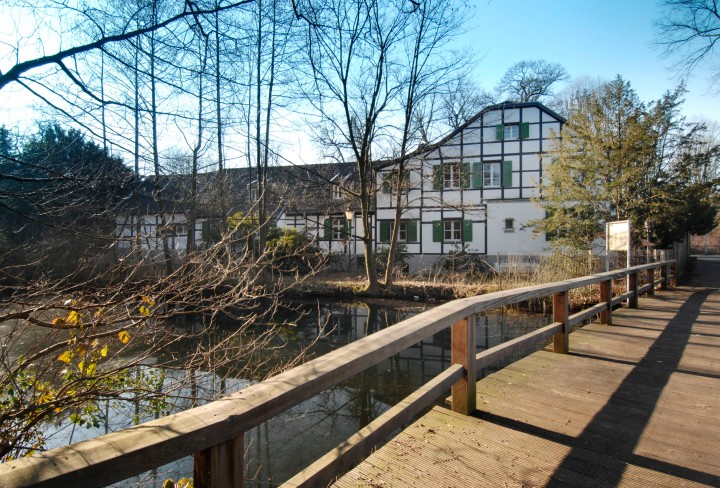
The surrounding park and the work’s pond are open to the public and complete the ensem-ble of the museum, the industrial-archaeological park and the adventure playground nowadays.
© LVR-Industriemuseum
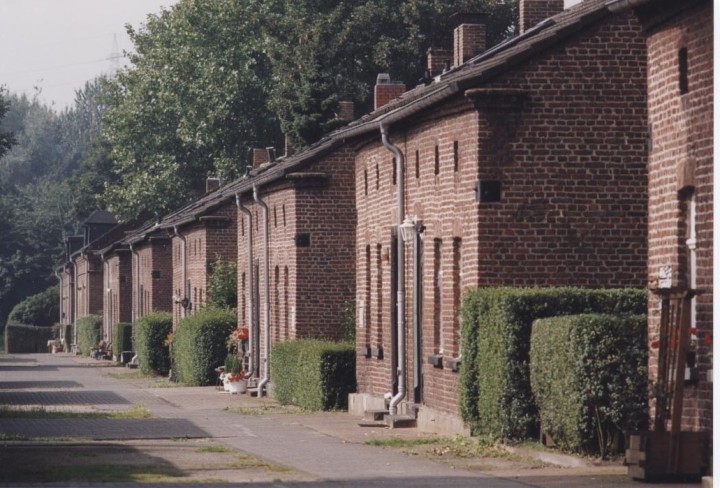
View into the housing estate Eisenheim, the oldest worker’s estate in the Ruhr-area.
© LVR-Industriemuseum
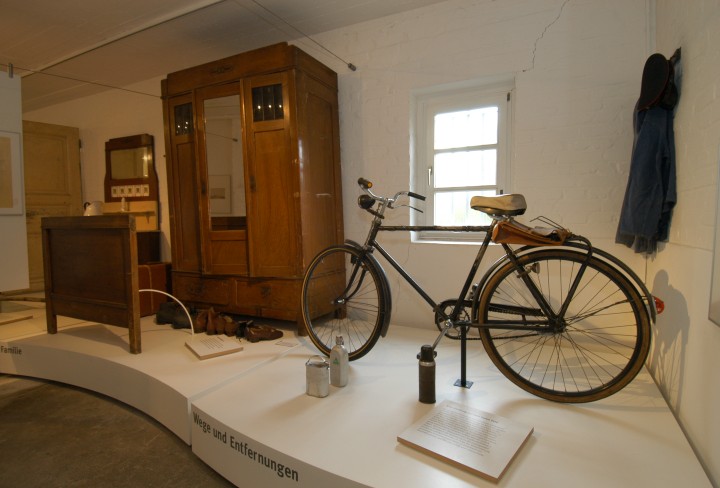
A worker’s life in the Ruhr-area: historical furniture and basic commodities show the visitors the former everyday life in the estate.
© LVR-Industriemuseum
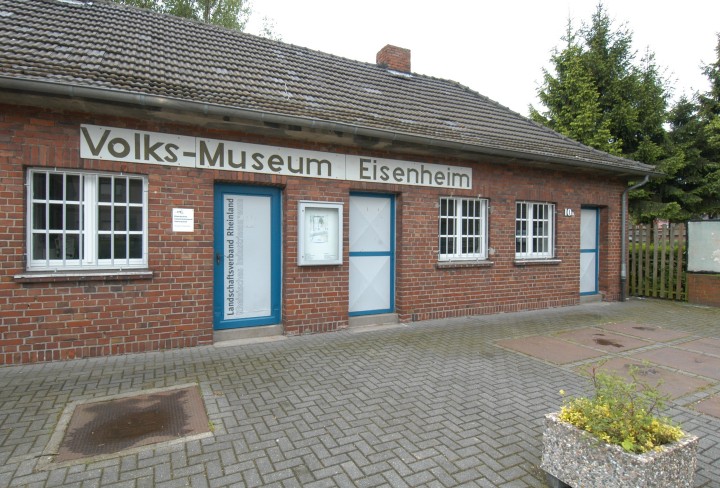
The public-museum is the first stop for visitors of the estate.
© LVR-Industriemuseum